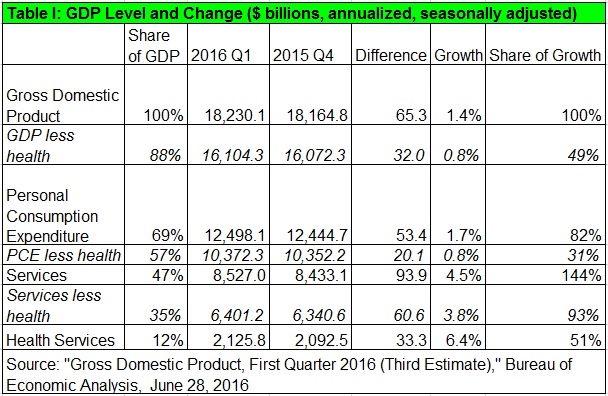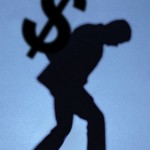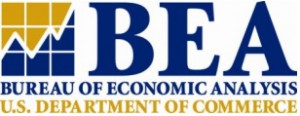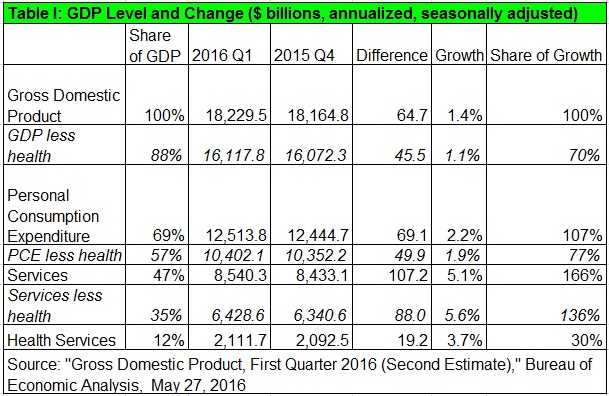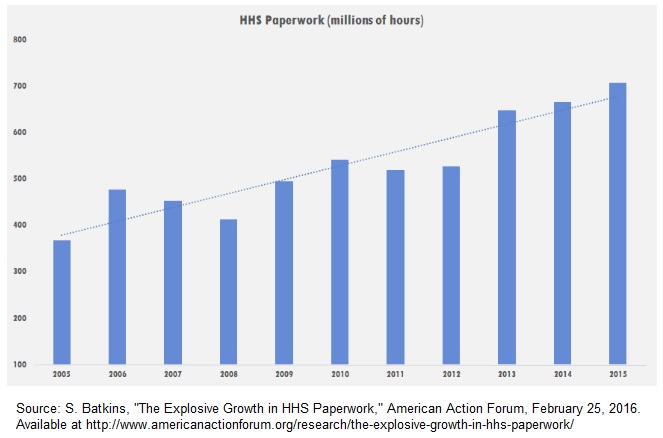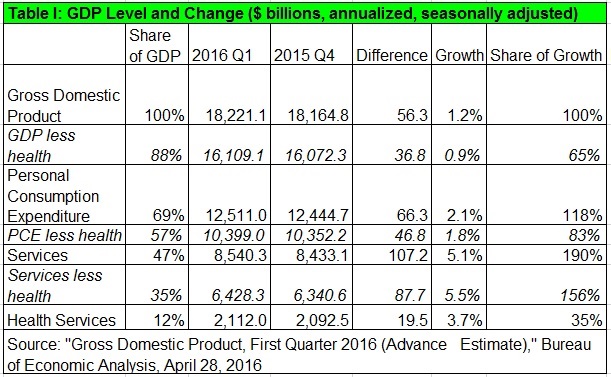Health Services 50 Percent of GDP Growth
This morning’s third estimate of GDP for the first quarter significantly increased the estimate of health spending, such that it comprised one half of GDP growth in the first quarter.
Spending on health services continue to dominate weak GDP growth. Growth in health services spending of $33.3 billion (annualized) comprised 50 percent of GDP growth. However, there was shrinkage in personal consumption expenditures on goods and private domestic investment. This meant personal expenditures on services grew much more than GDP overall. Growth in spending on health services amounted to 62 percent of growth in personal consumption expenditures and 35 percent of spending on services. Spending on health services grew by 6.4 percent, almost twice as much as growth in spending on non-health services (Table I).
